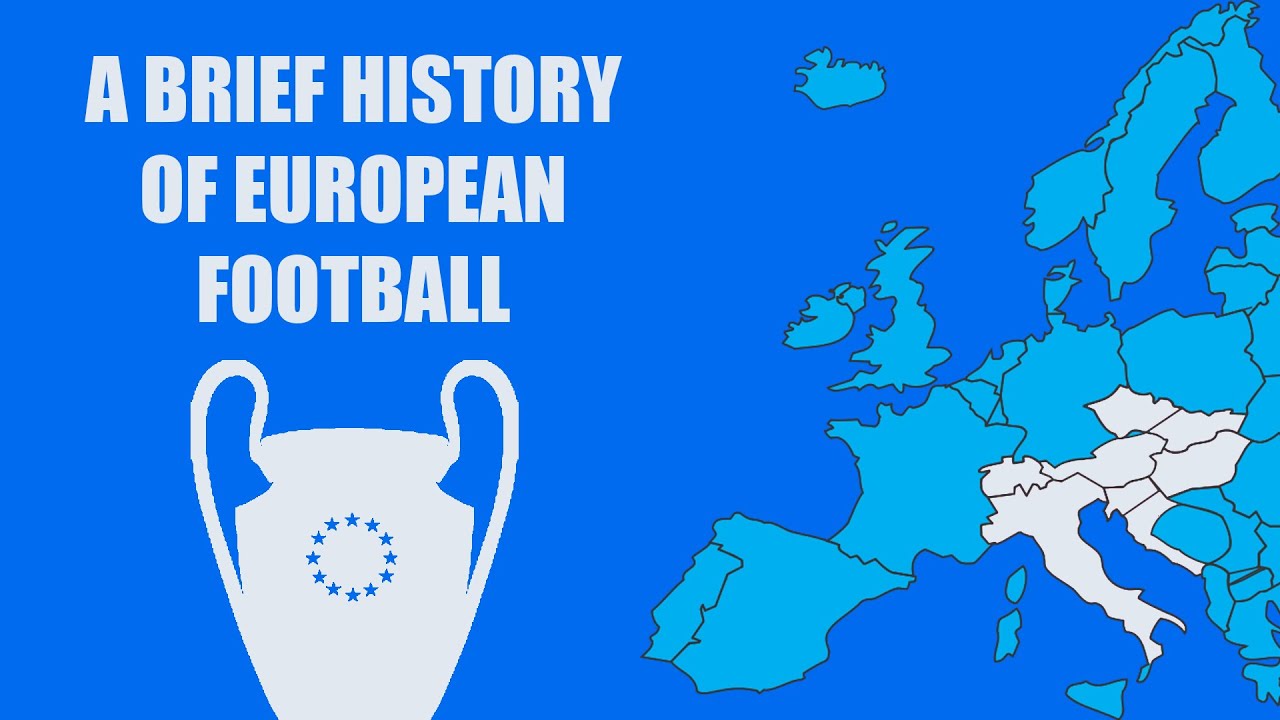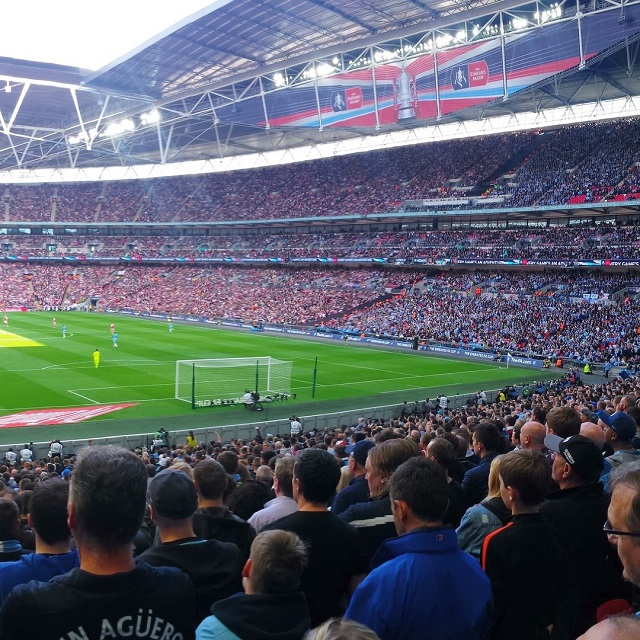European Football – This Sport In The World’s Biggest Continent
Football in Europe and soccer in North America contrast in a lot of ways, but it’s still the same sports more or less. European football is as vast as it is complex – but fun nonetheless!
Author:Henrik SchmidtReviewer:Gabriel MartinezMar 08, 20249.1K Shares122.5K Views

European footballis huge and, when talking about it, we’re actually dealing with a sportinitially called soccer.
The origin of the word “soccer,” according to Britannica, is British because it’s in England where footballoriginated.
Revisiting history, back in the 1880s, two of the popular sports in Great Britain were association footballand rugby football.
History.com tells us that the Oxford students of that time were fond of adding “-er” to create slang words.
They started calling “association football,” which was usually shortened to “assoc,” as “assoccer” and “rugby football” as “rugger.”
“Assoccer” eventually became “soccer” – even spelled as “socker,” per Britannica.
However, come the 20th century, Britons called again the sports “soccer” as “association football” or just “football” (and rugby football, aka rugger, as simply “rugby”).
The Americans – same with Australians and Canadians – are the ones who decided to refer to it as “soccer.”
Though both are categorized as contact sports– playersengage in physical contact (e.g., basketball, mixed martial arts, wrestling) – American footballor soccer and European footballdiffer in several ways.

A Brief History of European Football Competitions
European Football Structure
On its official website, Bundesliga explains why it’s such a complicated structure.
Throughout Europe, 55 national footballassociations operate. Their umbrella organization is the Union of European FootballAssociations (UEFA).
That’s why UEFA calls itself on its website as “an association of associations.”
Founded in 1954 and headquartered in Nyon, Switzerland, UEFA is the governing body of European football.
Though UEFA is in charge of footballcompetitions across Europe, each member country has its own ways of running/operating its “own domestic league system.”
To elaborate, let’s look at competitions.
There’s a qualification process to be eligible to play in a footballclub competition by UEFA (e.g., the Champions Leagueand the Europa League). Such a process varies among those 55 footballassociations.
It wants you to consider UEFA as the United States of America and the 55 footballassociations as its 50 states. Then each state has its own governing body. We can imagine the intricacy, right?
No wonder, according to an article published by Vancouver Magazine, European footballcould be compared to “algebra or physics: a concept that was just too confusing to grasp.”
Each footballleague system is composed of several teams. For example, there are 20 teams under La Liga (a footballdivision in Spain’s footballleague system). Three of La Liga’s teams are Athletic Bilbao, Barcelona, and Real Madrid.
All these teams compete and at the end of each season, the team that scored the most points wins. There are no playoffs (additional/elimination games).
What Is A Popular European Football Club?
Per EloFootball.com, as of April 24, 2022 and based on Elo Ratings, the top ten European football clubs are:
- Rank 1 – Liverpool FC (England)
- Rank 2 – Manchester City (not to be confused with its rival, Manchester United, which is at Rank 18)
- Rank 3 – FC Bayern Munich (Germany)
- Rank 4 – Real Madrid CF (Spain)
- Rank 5 – Chelsea FC (England)
- Rank 6 – Inter Milan (Italy)
- Rank 7 – AFC Ajax (the Netherlands)
- Rank 8 – Paris Saint-Germain (France)
- Rank 9 – RB Leipzig (Germany)
- Rank 10 – Juventus (Italy)
Included in the rosters of these European football clubs are world-famous football players, such as (in alphabetical order):
- Jorginho, 30 years old (Chelsea)
- Robert Lewandowski, 33 (Bayern Munich)
- Lionel Messi, 34 (Paris Saint-Germain or PSG)
- Neymar, 30 (PSG)
- Cristiano Ronaldo, 37 (Manchester United)
This 2022, the UEFA named young players displaying the “potential to take European football by storm,” and they include:
- Karim Adeyemi, 20 years old (FC Red Bull Salzburg; Austria)
- Amine Adli, 21 (Bayer 04 Leverkusen; Germany)
- Stipe Biuk, 19 (HNK Hajduk Split; Croatia)
- Aguibou Camara, 20 (Olympiacos; Greece)
- Yéremi Pino, 19 (Villarreal CF; Spain)
- Giacomo Raspadori, 22 (U.S. Sassuolo Calcio; Italy)
- Arsen Zakharyan, 18 (FC Dynamo Moscow; Russia)
How Many Football Leagues Are In Europe?
Listed below are the number of European football leagues:
- First Tier (the top division) – 56
- Second Tier – 45
- Third Tier – 43
- Fourth Tier – 56
- Fifth Tier – 34
- Sixth Tier – 38
- Youth League – 45
That will be a total of 317 leagues. Each league is composed of football clubs, usually more than a dozen. In the German football league system, for example, Landesliga Hamburg-Hammonia (sixth tier) has 33 football clubs!
The famed “Big Five” of European football are the leagues belonging in the top five slots in the first tier:
- Premier League(England; 20 football clubs) – total market value: 8.66 billion euros
- La Liga(Spain; 20) – 5.01 billion euros
- Serie A(Italy; 20) – 4.79 billion euros
- Bundesliga(Germany; 18) – 4.06 billion euros
- Ligue 1(France; 20) – 3.71 billion euros
The football leagues under UEFA are:
- UEFA Champions League (est. 1955 as Coupe des Clubs Champions Européensor European Champion Clubs’ Cup, aka European Cup; 1992, present name)
- UEFA Europa Conference League (est. 2021)
- UEFA Europa League (est. 1971 as UEFA Cup; 2009, present name)
- UEFA European Championship/the Euros (est. 1958)
- UEFA Nations League (est. 2018)
- UEFA Super Cup (est. 1972)
Initially founded by 14 countries, the Association of European Professional Football Leagues, or simply the European Leagues, now involves 30 countries and 36 football leagues from them.
This sports organization based in Switzerland aims “to enhance and protect the national competitions run by the domestic leagues.”
European Leagues coordinates with UEFA and FIFA(Federation Internationale de Football Association) and other European football stakeholders and related associations.
European Football Stadiums
The surface or the ground where people play football is called football field, football pitch, or soccer field.
Stadiums were constructed to accommodate a huge number of spectators, among other purposes.
Based from seating capacity, the top five biggest European football stadiums are the following:
1. Camp Nou(Barcelona, Spain)
- capacity: 99,354
- construction: 1954-1957
- cost: 1.73 billion euros
- renovations: 1995, 2008, 2018
2. Wembley Stadium(Wembley, London)
- capacity: 90,000
- construction: 2003-2007
- cost: approximately $1.57 billion
3. Signal Iduna Park(Dortmund, Germany)
- capacity: 81,365
- construction: 1971-1974
- renovations: 1992, 1995-1999, 2002-2003, 2006
- former name: Westfalenstadion(Westphalia stadium)
4. Estadio Santiago Bernabeu(Santiago Bernabéu Stadium; Madrid, Spain)
- capacity: 81,044
- construction: 1944-1947
- cost: 1.73 million euros
- renovations: 1982, 2001, 2020 up to present
5. Luzhniki Stadium(Moscow, Russia)
- official name: Grand Sports Arena of the Luzhniki Olympic Complex
- capacity: 81,000
- opening day: July 31, 1956
- cost: 350 million euros (2013-2017)
- renovations: 1996-1997, 2001-2004, 2013-2017
Other massive European football stadiums are San Siro(Milan, Italy) and Stade de France(Paris), both with 80,000 seating capacity; the Ataturk Olympic Stadium (Istanbul, Turkey; 76,092); and Allianz Arena (Munich, Germany; 70,000).
Conclusion
It’s not only the fans that get serious when it comes to European football.
In 2021, BBC reported about the U.K. government’s interest and support to host the 24th FIFA World Cup (2030 FIFA World Cup). It allotted £2.8 million (approximately $3.5 million) to conduct a feasibility study.
Football’s global appeal, according to American organization World Population Review, has remained strong in 2022.
An estimated 3.5 billion people across the globe are football fans, and it could be safe to say that a huge chunk of that population cheers for European football.

Henrik Schmidt
Author
Henrik Schmidt is a dedicated writer focusing on sports, betting, and various entertainment aspects related to the sporting world. With a passion for exploring the intersections of sports and entertainment, Henrik brings a unique perspective to his articles. His expertise in these areas ensures that readers receive informative and engaging content, making him a valuable contributor to the sporting community.

Gabriel Martinez
Reviewer
Gabriel Martinez is a respected author at Tennessee Independent, renowned for his expertise in covering News and Sports topics. With a comprehensive understanding of current events and a knack for delivering accurate and engaging content, Gabriel provides readers with insightful analysis and compelling narratives. His dedication to factual accuracy and commitment to delivering authoritative content make him a trusted source for news and sports enthusiasts on Tennessee Independent.
Latest Articles
Popular Articles


